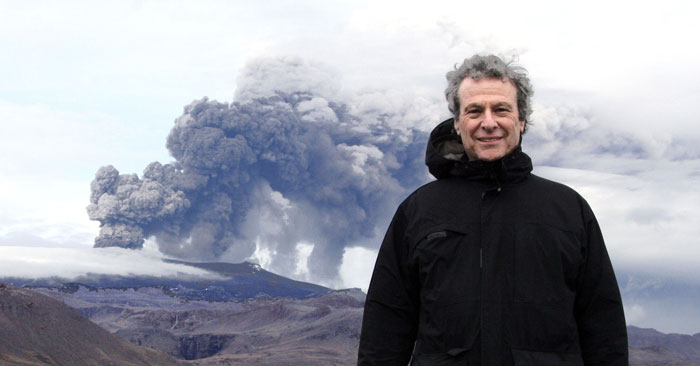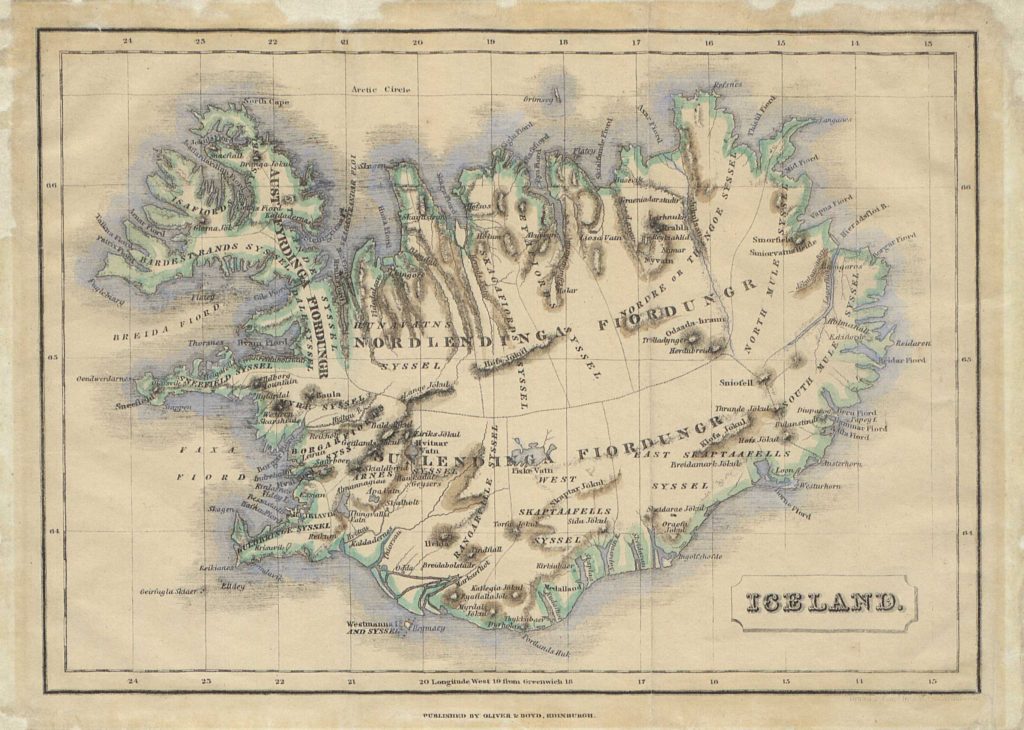

How the Icelandic Language Came to Be
The history of the Icelandic language dates all the way back to the 9th century, when settlers, mostly from Norway, came to live in Iceland. What was spoken at that time was Old Norse and this eventually evolved into Old Icelandic. Like many cultures, the language was passed on through spoken word before being preserved in the form of text. Impressively, the oldest preserved text in Icelandic was written around 1100.
If you are interested in being able to read Old Norse and Old Icelandic, check out the interview I did with Jesse Byock, a professor of Old Norse and Medieval Scandinavian Studies at UCLA and Háskóli Íslands. He wrote a Viking Language book series that teaches you how to read those languages.
During the 12th century and onward, is when the famous sagas and eddas (poems) were written in Old Icelandic. Being an isolated island in the middle of the Atlantic, worked in favor of Icelandic when it came to preserving the language. Even though, Icelandic is a Germanic language that was birthed from Old Norse, its incremental amount of evolution over many centuries resulted in it becoming a completely separate language from modern day Norwegian and other Scandinavian languages.
It is remarkable that even under Danish rule for more than 500 years (1380 to 1918), the Icelandic language did not change. Danish was learned by many but Icelandic was still used for official communication. Another fascinating tidbit of information is that there is an absence of dialects as you travel from one region of the country to the next. Some of my colleagues have mentioned that some words are said slightly different in the north than in the south but the language is pretty uniform around the country.
Because the Icelandic language has changed so little since the 1300s, modern Icelanders have the privilege of being able to read and understand the ancient text of their ancestors that was written 800 years ago. Even though the text has not changed that much, how the language sounds has changed over time. I’ve heard that a modern Icelandic speaker who is reading Old Icelandic is comparable to a modern English speaker reading Shakespeare.
Icelandic Grammar
Like some other Indo-European languages, Icelandic grammar is complicated. When a language learner is first introduced to the grammar, it seems like a daunting task to take on. I am still learning it and there are many days when the grammar structure trips me up. For starters, nouns, pronouns and adjectives are inflected in four cases (nominative, accusative, dative and genitive) and they can be in either singular or plural form. Nouns are also categorized into genders: masculine, feminine or neuter. Verbs can be in the indicative, imperative, conditional or subjunctive mood.
As you can already tell, the language can become very complicated to speak and process quickly, if you have never been exposed to it before. For the sake of time, I won’t go much deeper into this topic because it deserves its own series of podcast episodes to explain it properly. For those of you that have interest in learning the language, you can dip your toe in the pool by learning how to speak with an Icelandic accent. 😉
Efforts to Preserve the Language
While Iceland’s archaic language might seem odd to many foreigners, Icelandic people are very proud of their language and they don’t seem interested in changing it. In fact, there is an official committee at the Árni Magnússon Institute for Icelandic Studies whose job is to plan and preserve the language. The evolution of technology and increased exposure to other languages has posed some challenges for the language. The committee has found some clever ways to include words that didn’t exist in the language before. One example is that they will take existing Icelandic words and combine them to create new words.
The Icelandic Word of the Episode
The Icelandic word of the episode is tungumál, which means language. Listen to the podcast at 14:27 to hear how it is pronounced. I also shared a random fact about Iceland during this episode at 13:38. Check it out.
Want to learn Icelandic words and facts? Sign up for my Icelandic word of the week newsletter. The newsletter includes a word directly translated from Icelandic to English, a picture representing the word, an audio pronunciation of the word and a fact about Iceland.
If you have enjoyed this episode of All Things Iceland, please subscribe to the podcast, so you don’t miss an update. If you are listening to this on iTunes, Google Play or any other platform that allows reviews, please leave a review.
Þakka þér kærlega fyrir að lesa ( og að hlusta). Sjáumst fljótlega!
Thank you kindly for reading (and listening). See you soon!

